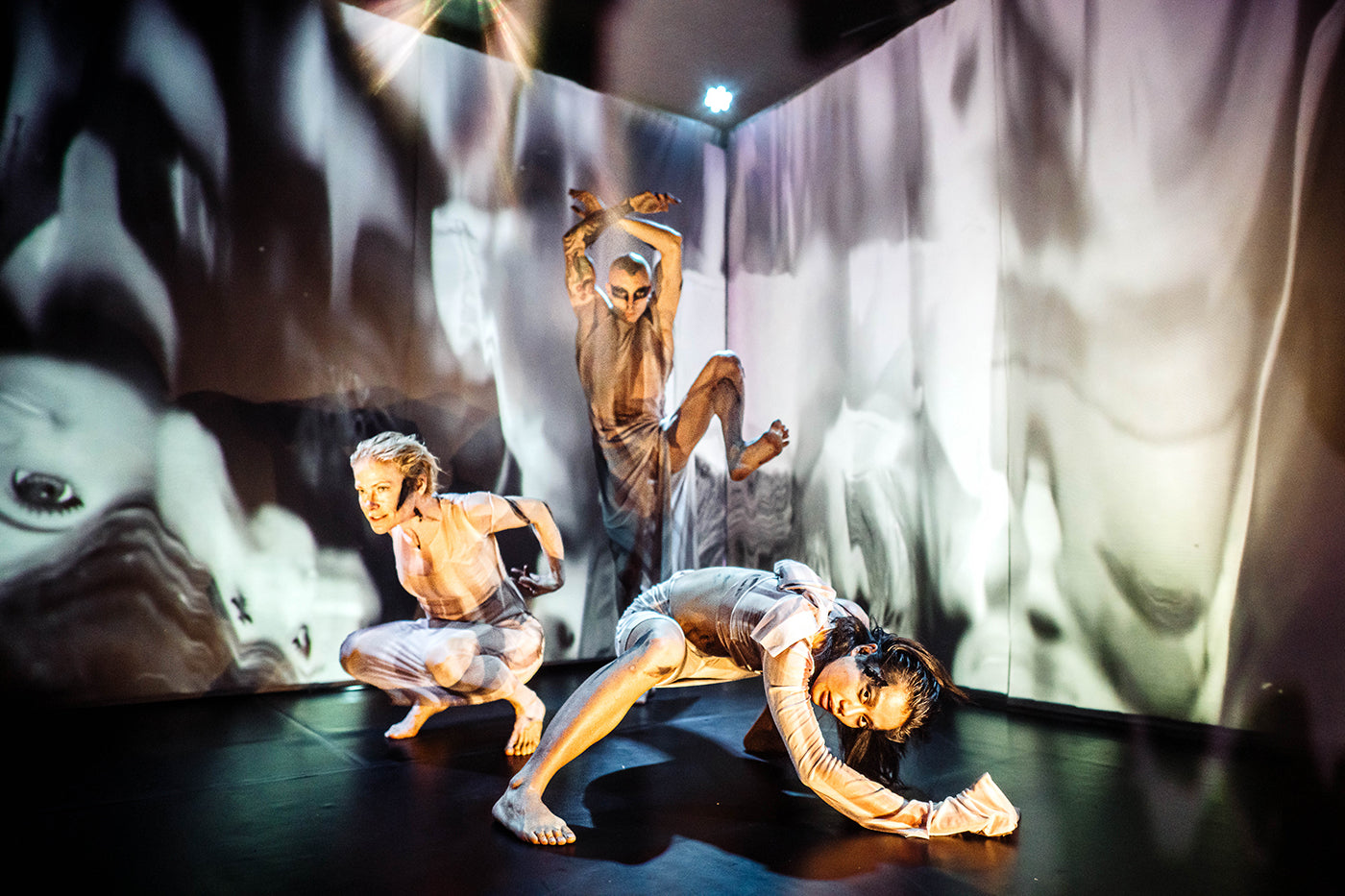You're working with an exceptional team. Please tell me about them and the collaborative process.
Yes sure, we feel so excited and inspired by the team. Musician Maria U Rossi known as “Cucina Povera” was the first artist we invited into the project, we were hypnotised and kinda obsessed by her music for a few year now. Originally from Finland, she has been living in Glasgow and part of the underground music scene until moving recently. Using her voice, synth and field recordings, Maria’s sculpts haunting and otherworldly compositions that oscillate between noise, vocal abstractions and strange ecclesiastical hymns; Her songs are often improvised and feel like stream of conscious postcards ruminating between the clash of nature and technical living. We find them achingly beautiful and have spent hours on hours getting lost inside her tracks, drawing worlds and birthing strange creatures, hahaha!
We have also been admiring (or fan-girling) our movement collaborators for a while now too. Suzi Cunningham for her ritualised and primal movements rooted in her extensive Butoh training and her transformative solo work, Phillip Alexander for his fluidity, athleticism and extensive dance experience with other companies (Paraorchestra (Bristol), Wendy Wheelman & Basil Twist project (NYC) and Joey Arias) and Rita for her arms, oh her wild arms, the way she fuses her waaking practice, battling and hip hop theatre training. Rita is also studying PHD in chemical engineering at Edinburgh Uni (swoon!).
For us all to find each other, we created a research dossier and invited a handful of Scottish based movement artists to a paid workshop/audition. The cube is only 3x3 meters and it you are totally immersed in a visual world. It can be quite disorientating. We invited them to respond to our research and create a human critter hybrid alongside a Cucina Povera track. What was revealed was that we were excited at the prospect of not just one but three bodies connecting in the cube to shape shift between human and nonhuman lifeforms.
After years of working in theatre spaces and tied to their schedules, we luckily landed our own rehearsal space so our cube could stay up. We scheduled our rehearsals to give plenty of time to reflect and work on visuals worlds in reposes to movement and vice verse. This allowed us to rely more on intuition and improvisation rather than planning in the way we perform: eg the lighting is operated live with no cues to enable the performers to move around the space in the moment and imagery created with real-time hand drawn techniques, and blending for the art forms of lighting, projection and shadow play. Devising with the body and technology concurrently from the first rehearsals, the effects it has on performers as they are fully immersed and become in a trance like state in the cube.
Other methodology-specific themes like collaborative devising and working with impulse, gesture and imagination inspired by Anton Chekov technique, as well as creating inner landscapes inspired by Suzi’s Butoh practice in response to Haraway's writings.
I guess we were collaging our movement, ideas and visuals scores at the same time which felt important. a kind of osmosis, learning by proxy together, naturally absorbing ideas, knowledge and technical wizardry through exposure to each other. a kind of unconscious assimilation. Haha!
The in-between times was spent with our dramaturg Lou Cope, who helped us structure our themes and build an emotive score as things started to emerge out of our material. Jack Webb joined us to help shape the choreographic language as well as our long term costume maker and collaborator SaeHee Simmons who offered us materials to pupate and squirm in. Musician and sound designer Jamie Grier brought us some extra synth soundscapes and Womp and, of course we can’t forget our brilliant long term producers Jill and Kat from Feral.




comments